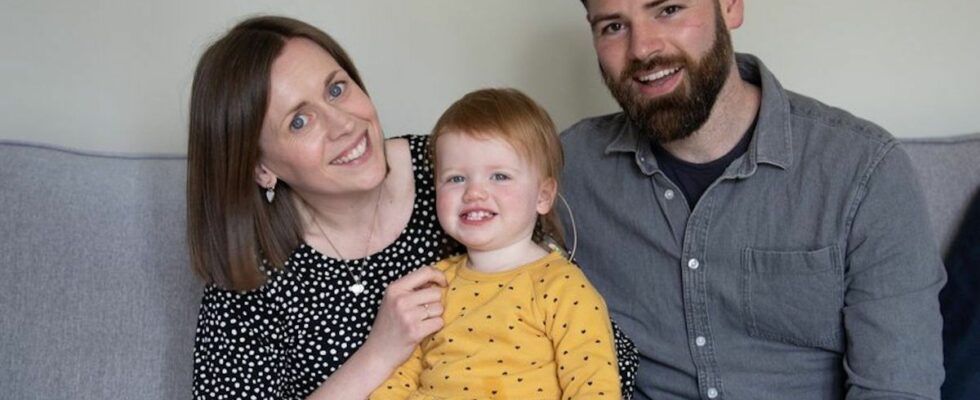Published on
Updated
Reading 3 min.
Suffering from profound deafness, Opal Sandy was able to benefit from revolutionary gene therapy before her first birthday. Now 18 months old, she hears her parents’ whispers. Stunning results!
As part of the CHORD trial started in May 2023, the very young child was able to benefit before her first birthday from a new gene therapy developed by the company Regeneron. Six months later, she hears her mother’s whispers and dances with her sister.
Profound genetic deafness that is difficult to detect
Opal Sandy was born completely deaf due to a rare genetic condition, auditory neuropathy, caused by the disruption of nerve impulses traveling from the inner ear to the brain. In detail, a mutation in the Otof gene alters the production of otoferlin, essential to allow the inner hair cells of the ear to communicate with the auditory nerve. Children with a variation in the OTOF gene often pass newborn screening because the hair cells are functioning, but they are not communicating with the nerve. This means that this hearing loss is usually only detected when children are 2 or 3 years old – when a speech delay is likely to be noticed.
Although hearing aids and cochlear implants can amplify sound to improve hearing for people with a variety of hearing losses, these devices do not currently restore the full spectrum of sound. Around 20,000 people in the United Kingdom, Germany, France, Spain, Italy and the United Kingdom are deaf due to a mutation in the OTOF gene.
Breakthrough gene therapy restores Opal’s hearing
Having benefited from early genetic screening (her sister was already affected), Opal received an infusion containing a harmless virus (AAV1) capable of delivering a copy of the OTOF gene via an injection into the cochlea during a surgical procedure under anesthesia general. During the operation, while Opal received the gene therapy in her right ear, a cochlear implant was placed in her left ear.
Four weeks after receiving the gene therapy infusion in her right ear, her parents noted that Opal responded to sound, even with the cochlear implant in her left ear turned off. Clinicians noticed continued improvement in Opal’s hearing in the weeks that followed and, at 24 weeks, confirmed near-normal hearing levels for quiet sounds, such as whispers, in her ear processed. Now 18 months old, Opal can respond to her parents’ voices and communicate words such as “Daddy”, “Mommy”…
“These results are spectacular and better than I expected. Gene therapy has been the future of otology and audiology for many years and I am very happy that it is finally here. We hope this will mark the start of a new era for gene therapies for the inner ear and many types of hearing loss” said Professor Manohar Bance, ear surgeon at Cambridge University Hospitals NHS Foundation Trust and chief investigator of the trial.
Towards a new reference treatment
More than sixty years after the invention of the cochlear implant – the standard treatment for patients with OTOF-related hearing loss – this trial shows that gene therapy could be a future alternative. This marks a new era in the treatment of deafness. He also supports the development of other gene therapies that could make a difference in other genetically-based hearing diseases, many of which are more common than auditory neuropathy.
Professor Bance explains the importance of intervening quickly: “We have little time to intervene due to the rapid rate of brain development at this age. Delays in diagnosis can also cause confusion in families, as the many reasons for a speech delay and late intervention can impact a child’s development“.
In England, OTOF gene mutations can be identified by standard National Health Service genetic testing. Opal was identified as being at risk because her older sister suffers from the condition; this was confirmed by the result of a genetic test when she was 3 weeks old.
These tests are not carried out routinely, but if the results of this gene therapy are confirmed, we can imagine that the detection of this mutation will be generalized (unless the entire genome of babies is finally deciphered routinely).
Opal’s 24-week results, along with other scientific data from the CHORD trial, will be presented this week at the American Society of Gene and Cell Therapy (ASGC) in Baltimore, USA.
